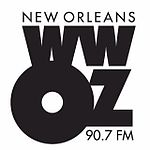Tulane Medical Center
1976 establishments in LouisianaBuildings and structures in New OrleansHCA HealthcareHealthcare in New OrleansHospital buildings completed in 1976 ... and 4 more
Hospitals established in 1976Hospitals in LouisianaTeaching hospitals in LouisianaTulane University

The Tulane Medical Center is a hospital located in New Orleans, Louisiana. The Tulane Medical Center has centers covering nearly all major specialties of medicine, and is the primary teaching hospital for the Tulane University School of Medicine. The hospital is jointly owned by Hospital Corporation of America (HCA) (82.5%) and Tulane University (17.5%). Tulane University and LCMC announced on October 10, 2022, that LCMC would purchase Tulane Medical Center (along with Lakeview Regional Medical Center, and Tulane Lakeside Hospital) from HCA for $150 Million.
Excerpt from the Wikipedia article Tulane Medical Center (License: CC BY-SA 3.0, Authors, Images).Tulane Medical Center
Tulane Avenue, New Orleans Storyville
Geographical coordinates (GPS) Address Phone number Website External links Nearby Places Show on map
Geographical coordinates (GPS)
| Latitude | Longitude |
|---|---|
| N 29.955658 ° | E -90.075884 ° |
Address
Tulane Medical Center
Tulane Avenue 1415
70112 New Orleans, Storyville
Louisiana, United States
Open on Google Maps










